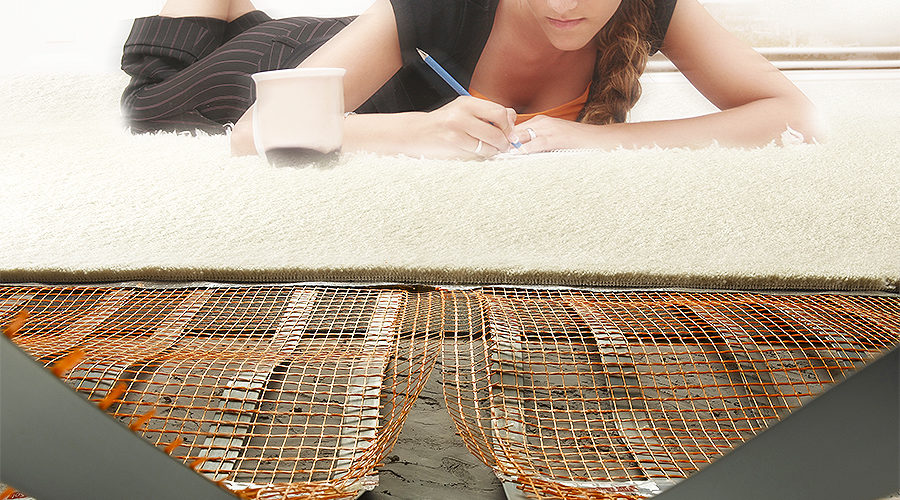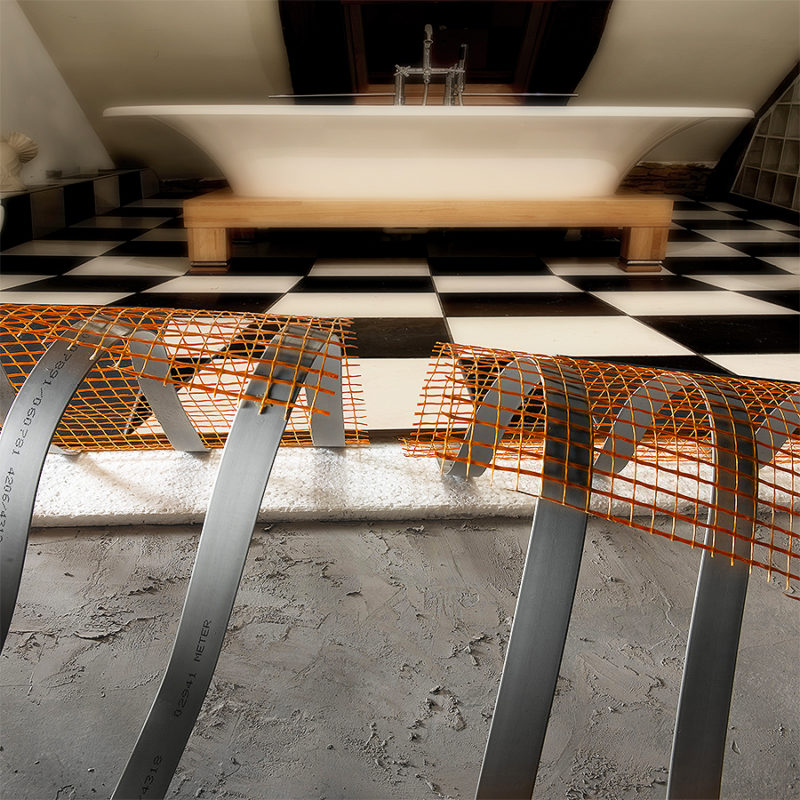Ron van Wijk, Technical Director at AHT International Group, discusses why the most efficient way of heating also comes with the lowest (embedded) carbon footprint and contributes to a circular economy.
Advanced Heating Technologies
Heat can spread in three ways, namely through conduction, convection and radiation. Since circa 1900, convection primarily has been used to heat the built environment. Ultimately, this led the well-known central heating system with radiators to become more or less the standard. In line with this, there now is a tendency to install more sustainable air-source heat pumps. However, heating via radiation, a technique that was already used in the old Greek and Roman Empire, is much more efficient than heating air. On top of that, it leads to a significantly lower (embedded) carbon footprint and uses much less natural resources.
As a result of the emission of the greenhouse gas CO2, the earth is warming up, which eventually will have catastrophic consequences for humanity. Heating the built environment makes a significant contribution to these CO2 emissions, which is why measures are needed to limit this. At the moment, the air-source heat pump is strongly promoted as the solution to save energy and thus to reduce the amount of CO2 emissions. That the heat pump would be sustainable is argued by the heat pump industry with the fact that it has a Coefficient of Performance (COP) of 4 to 5 – a number that indicates the ration between energy consumption and the heat emitted in the home. In contrast, radiant heat – which is generally classified as electric heating – would have a COP of only 1.
However, new calculations show that a heat pump is actually much worse for the environment than previously thought. The heat pump is even so harmful to the environment that according to environmental standards that fall under the Dutch Building Regulations, almost no houses may be built with heat pumps at all. This has to do with the fact that every house must not only meet environmental requirements, in terms of CO2 emissions, but also in terms of environmental impact. By including the refrigerant used in heat pumps, which is very harmful to the environment, the environmental impact is many times greater.
Though, this is not all. To be able to use the advantages of the heat pump, it is necessary that the room in question is very well insulated. However, insulation materials are known to be generally characterised by a relatively-high embedded carbon footprint. A heat pump is also relatively heavy, together with all the pipes and other components involving hundreds of kilos of material, mostly metals. These also have a very high embedded carbon footprint. Last but not least is the installation of a heat pump complex, which, in practice, requires several logistic movements by technicians to the site where it is installed. Such complex technology also requires a maintenance regime and implies a relatively limited lifespan. This means that also during the operational phase, as well as after the service life has ended, technicians will have to travel to the site, again leading to extra CO2 emissions.
What about radiant heat in this regard? With heating air, by definition all the air in a certain room must be heated in order to experience the desired temperature somewhere in this room. A fact is that warm air is lighter and, therefore, rises to the ceiling. Due to this, a negative vertical temperature gradient is created. As the warm air comes into contact with cold walls and a cold ceiling, it cools down and, therefore, partly has to be reheated again. All this not only implies that more energy must be produced than is strictly needed, the air convection airflow as well as the cold floor still give an uneasy feeling. In addition, users must strictly adhere to a user protocol, after all if a door or window (or even a cat flap) is open too long, the warm air produced quickly disappears.
Radian heat, on the other hand, does not heat air (also functions in a vacuum), but rather masses, such as pieces of furniture or people in the room. It is, therefore, much less sensitive to the need for insulation and opening of windows and doors. By offering radiation heat from the floor, the room temperature can also be about 3°C lower than with air heating, while experiencing the same or even a better thermal comfort than with air heating.
Another great advantage of radiant heat is that it can be very easily offered ‘locally’ by creating different individual heating zones in a room. For example, a workplace, a sitting area, a dining area, etc. in the same room can be provided with its own individual temperature. Intelligent thermostats control the temperatures in different zones, it’s even possible to operate all zones from your smartphone.
Because radiant heat does not heat air, the arithmetic comparison with the heat pump only based on the previous mentioned Coefficient of Performance makes no sense. Add to this the possibility of creating several individual heating zones, radiant is at least as economical in use as a heat pump. In addition, the amount of material that is built in is only a fraction of the heat pump so you’ll save a lot of space. The installation is also much simpler and the service life is estimated to be several decades. There are no maintenance costs during use and because the system is completely modular and completely detachable, it can always be reused at the same quality level. As such, it contributes to the objectives of a circular economy.
For Advanced Heating Technologies, reducing CO2 emissions and reducing the use of raw materials is a top priority. Therefore, it brings a unique radiant heating (floor and wall) system to the market consisting of flexible radiation mats that can be installed directly under the floor finish (wood, laminate, PVC, cork, ceramic tiles, etc.) or behind wall panels, plastering or tiles. This enables the room to heat up very quickly. What makes AHT’s infrared heating mats unique is that this patented technology consists of thin strips of a metal ally with a thickness of only 25/1000mm that have an amorphous molecule structure (normally metals have a crystalline molecule structure). Amorphous metals have superior characteristics, including a very efficient conversion of electrical energy into radiation heat and a very long lifespan.
AHT products are already applied in more than 50 countries in the world, not only for the built environment but also in the agricultural sector (e.g. greenhouses), sports fields and infrastructure projects.















